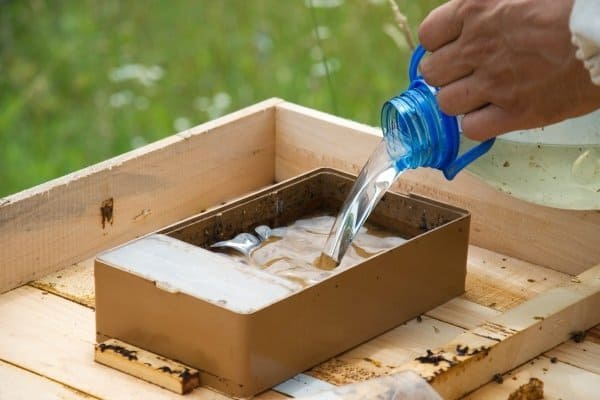
Bees have the ability to travel up to five miles when under stress, necessitating an abundant source of water in close proximity to their hive.
Create a watering station using a shallow container that holds no more than several ounces of water, then place materials that float such as corks, sticks or overturned frisbees to allow the bees to perch safely near the source without drowning.
Contents
Sticks or small pieces of driftwood
Honey bee water feeders can help bring bees outside and keep them cool during hot summer days. Bees need water both to hydrate themselves as well as to cool their hive.
Setting out water sources for bees is simple. All it takes is selecting a shallow dish or pan and filling it with stones, marbles or any other objects which provide bees with safe landing spaces for collecting and drinking their supply of freshwater.
As part of your beekeeping strategy, it is also vital to source water that has not been treated with pesticides or other chemicals. Bees will more readily visit clean sources of water than ones treated with chemicals – helping them avoid potential threats such as pesticides and diseases.
Marbles or glass stones
Honey bee water feeders can provide safe landing spaces when their pollinator friends need water, making a positive contribution to our pollinator populations and making an immediate difference. With little effort and minimal cost required, creating such an easy DIY project could make an amazing impactful contribution towards protecting pollinators species!
Making a water station for honey bees starts with filling a shallow bowl or pan with colorful marbles or glass stones – this will attract bees! These colorful stations help attract bees too!
Bees also like water that smells natural. Bees are attracted to waters containing earthy scents such as wet soil, decaying fruit or vegetable matter, or the scents given off by aquatic plants such as moss, worms or aquatic lichens.
Your shallow dish can hold small quantities of these materials and, once full, be filled with only enough water to cover them without completely submerging. Set the dish in an area where bees will have shade to stay hydrated while they wait their turn to feed on your harvest.
Pebbles or smaller river stones
Bees don’t do well swimming, so providing them with safe landing spaces to collect water is key. Pebbles or smaller river stones are excellent solutions.
Fill any shallow container, such as a dish from your kitchen or frisbee, with pebbles to give bees somewhere to stand and drink from. Be wary not to overfill with water as that could drown them!
An alternative approach for water feeding honey bees would be utilizing a bird bath, which has the added advantage of being shallow enough that bees can perch upon it and collect water more effectively.
Bees need time and space to rehydrate before beginning their collection of pollen and nectar from flowers, which means keeping bees close to their hive ensures they won’t have to travel long distances to find water sources – helping their colonies remain healthy.
Corks
Bees are thirsty creatures, so they require access to freshwater at all times throughout the year in order to survive and avoid dehydration and possible colony collapse. Without access to fresh water sources, the honey bee colony could die of dehydration which poses serious threats.
Bee water feeders are an easy and cost-effective way to provide reliable access to drinking water for bees and other pollinators. Setup takes less than 15 minutes, maintenance requirements are low, and they provide reliable access.
Key to creating an effective watering hole for bees is making sure it’s shallow enough that they can land and use as support while drinking, meaning corks or sticks could make their journey much simpler to reach water more quickly.
Corks are an ideal material to make bee water feeders, as their floating nature enables bees to land and drink from them easily. Furthermore, corks work great as birdbaths or shallow containers designed to fill with birds or other creatures – you could also add small stones or pebbles for extra stability in these vessels.


